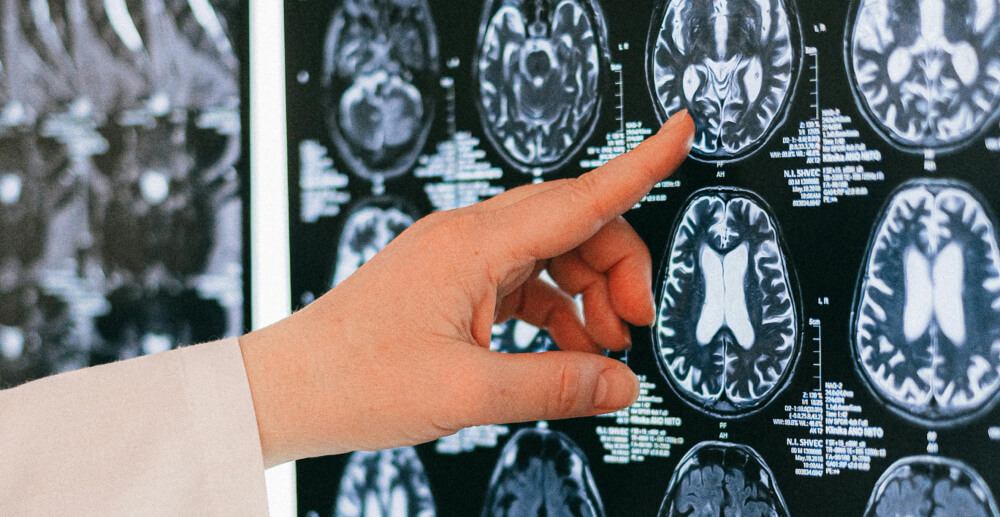Why is Suboxone (buprenorphine/naloxone) dissolved under the tongue (sublingually) or against the inside of the cheek (buccally)?
First, let’s start with the very basics.
What is Suboxone?
Suboxone is a brand of buprenorphine/naloxone medication, two drugs that both affect the brain’s opioid receptors. There are other brands (like Zubsolv) that also combine buprenorphine and naloxone in the same ratio, as well as generic versions.
Buprenorphine is a semi-synthetic partial opioid agonist. An agonist is a substance that activates a receptor in the body (in this case an opioid receptor) to create a response. Buprenorphine is a partial agonist because it only partially activates the opioid receptors. At low doses, buprenorphine is prescribed for pain relief. At higher doses, it is prescribed to treat opioid use disorder. When it partially activates the opioid receptors, it relieves cravings and withdrawal symptoms without creating euphoria or “high.” If you take more buprenorphine, after a certain point the effects no longer increase. This is known as the “plateau effect” and is part of why there is less risk of adverse effects with buprenorphine than with other opioids.
Naloxone is an opioid antagonist that displaces opioid molecules and blocks off the opioid receptors so opioids can’t activate them. It is best known as the opioid overdose reversal drug Narcan. When administered to reverse an overdose, it is given as a nasal spray or intravenously (as a shot). Naloxone is included in the formulation of Suboxone and Zubsolv (and their generic equivalents) to discourage people from misusing the medication. When taken properly, the naloxone in Suboxone does not get absorbed well by the body. However, if someone tries to inject, smoke, or snort the drug then the naloxone will be absorbed enough to cause immediate opioid withdrawal.
Why is Suboxone taken under the tongue?
The simplest answer is something called pharmacokinetics, which is just a fancy way of describing what a drug does once it is inside the body. Pharmacokinetics is why people report drugs working differently for them as compared to their friends. How the drug is absorbed, how it is transported in the blood, how it is broken down by the body’s enzymes, and how it is eliminated from the body all determine our experience with a drug.
Drug developers study the pharmacokinetics of each drug for years before it hits the market. That research is how we know that buprenorphine isn’t absorbed well by the lining of our digestive system. When put under the tongue or on the cheek, however, buprenorphine is absorbed well. A sublingual film or tablet might seem weird but it is the most effective way to get buprenorphine where it needs to go.
What about taking buprenorphine as an injection or nasal spray?
Technically, it is possible for buprenorphine to be administered in those ways. There is an injectable form of buprenorphine called Sublocade. Sublocade is a once-monthly injection under the skin that releases buprenorphine continuously until the next injection. Other, non-sublingual formulations of buprenorphine exist, but they are only approved by the FDA to treat pain rather than opioid use disorder.
The biggest reason why you don’t commonly see intranasal or injectable buprenorphine available for addiction treatment (other than Sublocade) is the increased potential for misuse. There is a long history of misinformation surrounding addiction that still impacts how we treat it today. Before 2000, the Harrison Narcotics Tax Act of 1912 prevented people with an addiction from being prescribed narcotics like opioids at all. This is a byproduct of the arcane idea that addiction was a moral failing rather than a disease. It took Congress close to a century to create a partial fix in the form of the Drug Addiction Treatment Act of 2000. While DATA 2000 allowed clinicians with a special waiver the ability to prescribe Suboxone to patients with opioid use disorder, there was still a misplaced belief among policymakers, public health professionals, and addiction treatment circles that treatment with Suboxone is tantamount to switching out one addiction for another. In 2023, the DATA-waiver was removed, and it is now easier for medical providers to prescribe buprenorphine.
While the hysteria over medication-assisted treatment is lifting, it is impossible to deny that some people do misuse Suboxone. That is why naloxone is added to many buprenorphine products and why providers who prescribe Suboxone are often required by law to administer drug screens.
TLDR: Why is Suboxone taken sublingually?
Buprenorphine is absorbed really well through the membranes in the mouth. It is not absorbed well at all through the stomach, so swallowing it doesn’t work. Naloxone is not absorbed through the mouth, so it does nothing when Suboxone is taken as directed. Naloxone is absorbed rapidly when snorted or injected, so if Suboxone is misused, the naloxone blocks any high and sends a person into withdrawal. The naloxone is like an emergency brake that is only engaged if Suboxone is taken inappropriately.
I have more questions about Suboxone
Check out our Suboxone answers page for more answers to frequent questions about Suboxone and its use in recovery from opioid use disorder.








